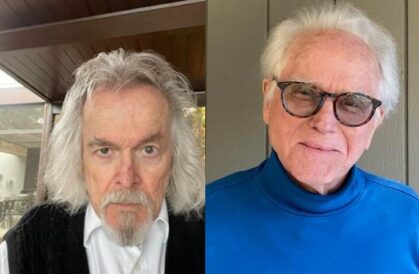Guest opinion: The cost of political money

Photo supplied, Weber State University
Gavin RobertsThe summer I moved my family to Ogden to start teaching economics at Weber State, I spent a week at the American Institute for Economic Research in Great Barrington, Massachusetts. Its founder, Edward C. Harwood, was a soldier�’engineer turned economist who believed that monetary stability was essential to both freedom and prosperity. Harwood experienced inflation much like we have in recent years — first during the Great Depression and again after World War II. According to an AIER biography of Harwood, his study of those inflationary periods led him to realize that “with the insertion of political will into the money�’creation process … business and the public were forced to deal with … unpredictable future monetary policy decisions.”
Maybe we can learn from recent events at the Federal Reserve, the high inflation after the pandemic, and today’s economic turbulence about the dangerous role of political will in money creation, the same way Harwood did during his time. His warning is as important today as it was then, reminding us that when politics drives monetary decisions, the costs eventually reach everyone.
First came a post�’pandemic inflation surge. More recently, we’ve experienced a declining labor market alongside lingering inflation — an uncomfortable phase that’s followed inflationary booms before. Savings accounts have lost value even as nominal balances grow. In economic terms, that’s the effect of money losing purchasing power. Is it possible that political will had any influence on these events?
First, we need to quickly review what monetary policy does, and how it influences inflation and the business cycle. (Easy peasy!) The Federal Reserve affects how much money circulates in the economy mainly by adjusting interest rates and credit conditions. When too much money is created, spending rises faster than production, pushing prices up and fueling an economic boom. Easy credit can also encourage bad investments — projects that look profitable only while money is cheap. When the Fed eventually tightens to slow inflation, those fragile ventures collapse, borrowing dries up, and investment falls. In this way, excessive money creation can turn a normal business cycle into a more painful boom-and-bust.
That’s why Federal Reserve independence is important. Independence means that the Federal Reserve can make policy decisions without interference from those seeking short�’term political gain. It doesn’t mean the Fed is above the law or unaccountable, but that it must be protected from political pressure strong enough to distort its judgment.
That principle is now being tested. The recent attempt by President Donald Trump to fire Federal Reserve Governor Lisa Cook is a clear example of direct political interference — an effort to control monetary decisions by controlling the people who make them. Courts have blocked removal for now, and the Supreme Court has allowed Cook to remain while the case proceeds — underscoring why independence exists in the first place. When political leaders can remove central bankers at will, monetary policy becomes an extension of partisan power rather than a guardian of price and employment stability.
But not all threats to independence are as obvious as a firing.
In August 2020, the Fed revised its framework to a form of average inflation targeting and updated its statement to say that maximum employment is a “broad�’based and inclusive” goal. In practice, that meant tolerating inflation above 2% for a time, while placing more weight on employment “shortfalls” across communities. The former gave the Federal Reserve cover to serve the latter political goal.
In 2021, the Fed repeatedly described inflation as “transitory,” and it did not begin raising rates until March 2022, tightening rapidly thereafter. Supporters argued this approach gave the labor market time to heal in a broad�’based way; critics contend it contributed to a slower policy response as prices surged.
In 2022 and 2023, the administration and many advocates highlighted Lisa Cook’s expertise on inequality and inclusion when supporting her nomination and reconfirmation — perfectly respectable credentials, but ones that reinforce how distributional aims were seeping into a central bank’s mission. Inclusion isn’t inherently bad, but incorporating it into monetary policy invites political will into money creation.
The biography of Harwood published by the American Institute for Economic Research makes clear that he understood the danger of political influence over money. When “political will” enters the process of creating money, it explains, distortion follows — first in prices, then in institutions. Harwood founded AIER to defend the idea that stable money is a public good, not a political instrument. His warning wasn’t against compassion or reform; it was against the illusion that you can have both political money and trustworthy money at the same time.
Gavin Roberts is an associate professor of economics and chair of the economics department at Weber State University. He is a recipient of the Gordon Tullock Prize from the Public Choice Society and regularly shares his research locally, nationally and internationally. This commentary is provided through a partnership with Weber State. The views expressed by the author do not necessarily represent the institutional values or positions of the university.



